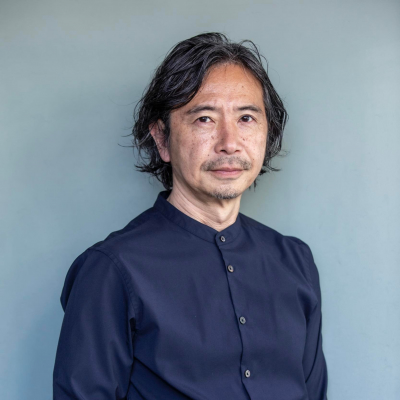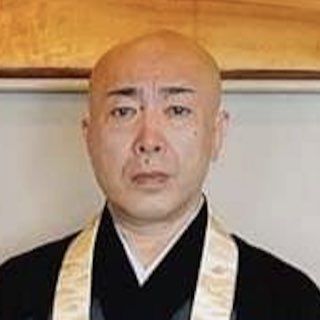
COLUMN
Search by keyword
- All
- Ryotei & Restaurants
- Lodging/Hotels
- Producers
- Technology
- DX (Digital) & SNS
- City Planning
- Utilization
- Gastronomy and Culinary
- Japanese Nature
- Japanese history and traditional culture
- Japanese Food Culture
- Agriculture
- Fisheries
- SDGs
- Local production for local consumption
- Foreigner Activation
- Experience
- Overseas Expansion
- Fermentation
- Public-private partnerships and collaborations
- Sake
- Community Revitalization
- Spirituality
- Japan of the Sea
- Mountain Japan
VIEW ALL
-
Read more

15 A “Delicious” Economy to Change the Future of Society—Living in a Country with the Best Food in the World
Japan can perhaps be called the country with the best food in the world. In a global survey asking which countries people most want to visit after the pandemic, Japan was number one among people living in Asia and number two among those in Europe and the US. In both cases, Japan was at the top end of the list. Moreover, the number one reason people wish to visit Japan is said to be for its food. As this suggests, while many foreign visitors to Japan come in search of delicious food, Japan in fact has the highest number of Michelin-starred restaurants in the world. The total number of stars and three-star restaurants in Tokyo far exceeds that of Paris, which can be called the home of Michelin star framework. A characteristic of the restaurant industry in Japan is that many Japanese chefs have honed their skills not only in Japanese cuisine, but also in French, Italian, and other foreign cuisines, and have earned Michelin stars. Further, outside of Michelin stars, there are countless numbers of Japanese chefs who have won first place in international cooking competitions such as the Pasta World Championships and the World Pizza Championships. We can therefore say that Japan is the country that evolves tastes of other countries in more delicious way. Elsewhere, Japan has an abundance of delicious, seasonal foods from both the sea and the mountains. Thanks to an excellent supply chain, customers can consume these ingredients while they are still fresh. Meanwhile, advanced fermentation techniques developed in the preserved food culture have broadened the range of umami flavors. There are many positive aspects of Japanese food, such as the diversity of food culture, which varies from region to region, including traditional and local cuisine, and the high level of “seasoning technology” in factories producing seasonings and processed foods. Alongside its “deliciousness” technology, Japanese food is also highly regarded worldwide for its health benefits and for its lower environmental impact compared to Western food. In 2005, the number of Japanese restaurants overseas stood at approximately 25,000. In 2010 this number doubled to 50,000, and expanded to 150,000 in 2020. With such wonderful characteristics, it is essential that we seriously address how to maintain and develop our globally respected food culture. Doing so can help Japanese food culture maintain its dominance over the centuries. In a future of exploding world population, food will become […]
-
Read more

8 The Changing Roles of Chefs in Green Jobs and the Role of Career Education in Japan
The United Nations has said that up to 37% of the world’s greenhouse gas emissions come from global food systems. As we all reap the benefits of these food systems, we all play a role in global warming. As such, it is essential that we reexamine consumer behavior that up until now has been indifferent to environmental issues, and that we change our routines accordingly. Economic strategy in post-COVID-19 Europe has been focused on “green recovery”, and as one example, the European Commission has formulated the Farm to Fork Strategy. In Japan, too, the Ministry of Agriculture, Forestry and Fisheries is currently putting in place various environmental policies. Key to these strategies and policies is consumer education. While the fact that these economic strategies take a so-called product-out approach remains unchanged, what is important is to generate demand. To make the transition to more environmentally conscious consumer behavior, efforts in Europe to make environmental education a compulsory part of primary education are progressing, and similar efforts in Japan will no doubt follow suit. Having consumers acquire complete knowledge of environmental issues will help to promote the shift away from this indifferent mindset. However, there are limits to what compulsory education and a sense of responsibility can bring. Added value associated with environmental awareness must exceed price and quality. The automotive industry, for example, has been a gamechanger in linking environmentally conscious consumer behavior to status. In the same way, food systems must aim to link consumer behavior to a more enriched society. The ability to do so will be the key moving forward. For example, the goal for sustainable food systems could be to create decentralized societies or circular and ecological societies. This would ensure that, rather than local consumers feeling like they have to consume local ingredients and organic ingredients, doing so would help to create successful industries based on local food cultures. Goals such as these could be a significant driving force behind the transition to sustainable, abundant food systems. In Europe and US, there has been increasing attention on the role of chefs, whose responsibility in food systems is to create added value. They are also seen as influencers. Recently, it is not uncommon for chefs to have their own vision for society based on a complete viewpoint. The Michelin Guides, which assess restaurant quality, have begun awarding restaurants with Green Clover symbols. These symbols recognize a […]
-
Read more

4 Teachings for the Future from Shojin Ryori
There is an old children’s song that has been passed down in Sakamoto at the foothills of Mt. Hiei, where the old satobo residences of former monks can be found. The song is about the food consumed by Buddhist monks. The Buddhist monk Saicho, who founded the Tendai sect of Buddhism on Mt. Hiei, brought tea and tofu skin to Japan from China. The children’s song mentions a Buddhist meal of broiled tofu skin and takuan pickles, the latter of which is thought to have first been made by Ryogen, the 18th head priest of the Tendai sect who lived during the Heian period. As can be seen from this song, meat and fish are not consumed on Mt. Hiei, which has for many years been a location for ascetic training. Instead, priests on the mountain consume shojin ryori, a vegetarian Buddhist cuisine. Shojin ryori does not use any animal proteins from meat, fish, or eggs, nor does it use any pungent vegetables such as spring onion, onion, or garlic chives. The dashi used in shojin ryori is made from kombu seaweed or dried shiitake mushrooms. Shojin ryori places thorough importance on the balance between sourness, bitterness, sweetness, spiciness, and saltiness, and the idea is to enjoy the natural taste of the ingredients. Further, before and after every meal, it is custom for Buddhist priests to recite a prayer called the Saijikigi, a tradition that has continued for many years. The pre-meal prayer can be roughly translated as follows: “We are fortunate to receive this food thanks to the divine protection of Buddha and the blessings of living things. We shall respect the origins of the ingredients and appreciate the differing strengths and weaknesses of flavor. We will give thanks for these blessings and the variety of ingredients we consume.” After meals, too, we recite a prayer to give thanks for the life we have consumed to support our own. These prayers have been translated into modern Japanese from the Kanjin jikiho produced by Tendai Daishi, who is revered as the founder of the Tiantai school of Buddhism. Although we tend to consume delicious ingredients without much thought,but we are consuming life in fact. The Saijikigi is an expression of thanks for all living things. Behind this idea is the Buddhist belief that Buddha exists in all things, be it mountains, rivers, trees, or grass. At Enryaku-ji Temple on Mt. […]

